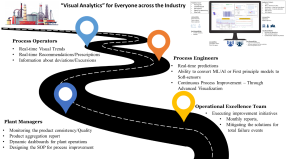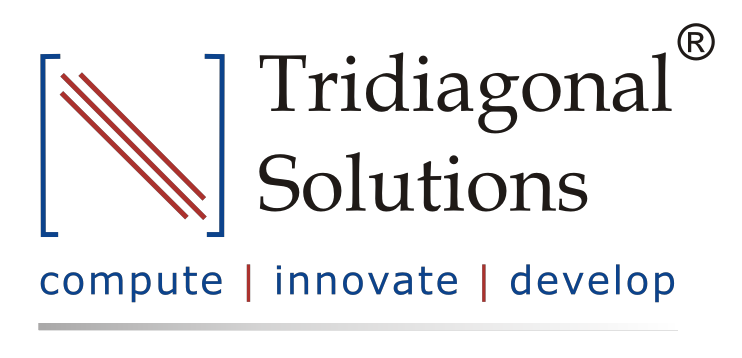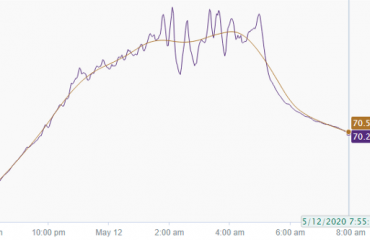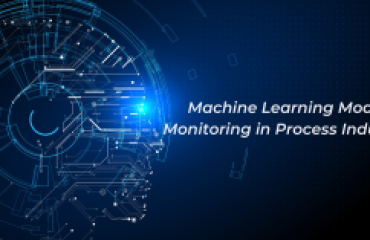
Courtesy: Pixabay
Introduction
“Technology is best when it brings people together”
“Technology is best when you use it wisely”
“Data is the real evidence”
That’s right, today in this world of the digital era, we are all surrounded by digital technologies, tools & data. Everyone of us is now becoming a part of it, some driving it, and some being driven by it. For some, it’s incremental and for some it’s disruptive. But we all are the victim of this change.
There are mixed opinions on the adoption of these technologies, where for some it has brought huge realization in terms of ROI/monetary savings, whereas for some it has been futile. And with these opinions what would be your take?
In this article, our focus would be oriented more around the process and manufacturing space, which would fairly cover the space of oil & gas, spec. chem, pharma, heavy metals and other similar industry. This industry is heavily the function of the following: people, process and environment. Which means that, technology is expected to support and help each and every element of the industry.
Let’s dive a little deep into the core of digital transformation elements in process and manufacturing space.
Journey of Digital Transformation
Digital is the new revolution. The decisions are bound to be made through the insights and foresight what your data shows, and not solely based on your experience. This transformation is supposed to help you with intelligent systems that has the potential to increase the productivity, and performance in a sustainable way.
Technology being a major driver for this journey, also implies that, the group of users who shall be driving it need to have a strong hold on it, and should have a fair idea about its implications and consequences, if not handled well. Don’t worry, this article is not intended to trigger the alarm of fear in you, but rather to set off digital awareness. That’s right, “digital awareness” because, you are going to invest in an expensive, high-tech solution, which requires well-experienced drivers who are expected to be technology experts, and domain experts and has the same vision as that of the organization. It really starts with the identification of the first group of users and drivers who are going to utilize the technology, evaluate its functionalities and potential to satisfy the business KPIs. They really determine, whether the technology is going to be the high value solution or is it going be in vain. The adoption and scalability of the technology is going to be the function of the users representing the organization’s culture, with a strong understanding of the hierarchy and people in the organization, and then comes the digital readiness & processes and operations.
It’s not just an IT-solutions, rather, it’s a solution which has the potential to support and uplift all user groups at different levels and different teams- be it production, plant, maintenance, HR, IT, the management or any others.
In simple words, digital transformation is about automating the repetitive tasks, and supported with the informed decisions – upskilling the people and automating the process. Its all about identifying the digital driver, and digital levers?
Below is the schematic representation of how to strategize your operational excellence for digital transformation.

Fig. Strategize your Digital transformation roadmap for remote monitoring operations
Who should transform?
Anyone and everyone who has the set vision & goals for enhancing the work culture and bringing about the positive change and has a mission to think beyond the approach of siloed, centralized and disparate to collaborative, decentralized and orchestrated way of working should admire the benefits of digital transformation.
Operational/manufacturing excellence teams, whose task is to bring about benefits in the process and manufacturing through better and intelligent solutions can realize the benefits at various level. They can realize it through condition-based monitoring, predictive & prescriptive analytics, decision support systems and optimization in real-time. This has the potential to eliminate the shop floor variabilities, when it comes to experience based decisions, which is not backed by any beyond-human intelligence. One has to adopt such technologies which can add the layer of intelligence to the overall process and operations for making better and informed decisions. (https://dataanalytics.tridiagonal.com/digital-transformation-for-the-process-industry/)
Summary
Digital transformation is the new approach, and one has to adopt it before its too late. Technology itself cannot suffice the business requirements, rather it has to be applied on top of the human intelligence, which we apply on our routine-basis. Having the right drivers and stakeholders is a key to the successful implementation of digital transformation. Moreover, digital transformation has a huge potential in manufacturing and operations space, and one can start right from automating their regular and repetitive and manual tasks which currently is been performed on daily basis. It also helps the organization to look into their current challenges with a different lens and tangent, which could have been easily missed out otherwise.
Written by,
ParthPrasoon Sinha
Principal Engineer – Analytics
Tridiagonal Solutions
https://dataanalytics.tridiagonal.com/




